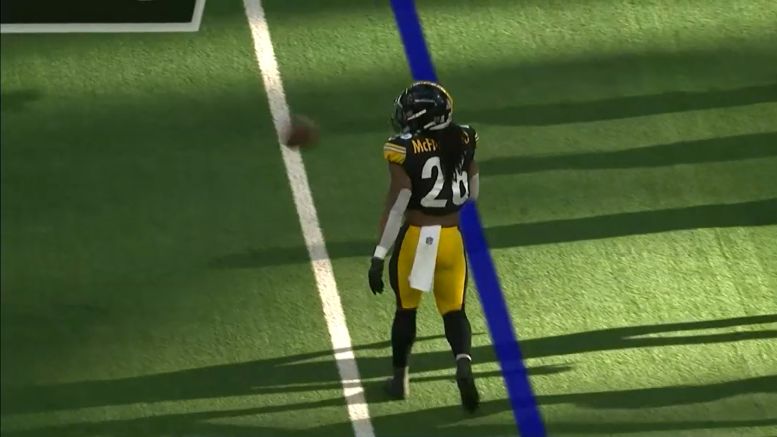One of the elements of offensive play that the Pittsburgh Steelers had struggled with in spurts over the course of recent weeks—really, all season—has been the matter of extending drives. There have been some obvious notable exceptions, of course, but, for example, they continue to be among the league leaders in three-and-out-percentage.
This is one of the reasons that offensive coordinator Randy Fichtner cited last week for their inability to get running backs other than James Conner involved in the offense the way they would like. Even Conner entered Sunday’s game with zero games of more than 20 carries.
Facing the Dallas Cowboys, however, they clearly had a plan of being more diverse in the backfield, as both Benny Snell and Anthony McFarland saw early action—though the success of those opportunities could be disputed, including a 4th-and-1 failure for Snell.
Snell, in fact, had all of one yard on three carries by the end of the first half, as his second season continues to look much different than many appeared to anticipate after he rushed for over 100 yards in Conner’s absence in the season opener.
McFarland finished the first half with four touches, the second-most he has had in a game so far during his rookie season, recording two carries for one yards, including the 3rd-and-1 failure that led to Snell’s failure a play later. He also caught two passes for 15 yards.
Considering the fact that they entered the second half trailing by six, and that the deficit ran back up to 12 before they got back on the board, it’s no surprise that the early appearance of diversity in the backfield had to be put to the side. In fact, once again, they turned primarily to a 01 personnel look with no running back on the field in the second half.
McFarland did get one more touch in the second half, a rush for six yards, but he also managed to draw an unnecessary roughness penalty after the play. While he was holding on to Leighton Vander Esch’s facemask following the tackle, the linebacker thrust his open palm into his face, drawing the flag.
That penalty put the Steelers on the Cowboys’ 27-yard line, into field goal range, which they would ultimately settle for after gaining just one more yard, and put them just a point behind Dallas with a little over seven minutes to play.
So what exactly can we take away from this? It looks as though the intention early on was to feature the run game to a certain extent, and to do so by utilizing the talents of three different backs. As the game got away from them, they had to turn to other means, but perhaps it’s an indication of what they would like to build off of going forward.


